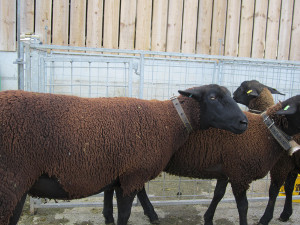Schwarzbraunes Bergschaf (CH)
Description
An earthy sheep of medium-size with straight nose line and ears of medium length. Polled. The wool is unicoloured light brown or chestnut to black. Head and legs are woolles, shining black or covered with brown hair. The animals’ built is deep and broad with well-muscled legs and strong but rather fine extremities. Their fleece reaches nearly merino quality. Non-seasonal. Age at first lambing is 15 to 18 months.
General and History
Developed from local types, it was originally used to produce fine dark wool. The breed was firstly officialy mentioned in 1925. In 1938, Jura, Saanen, Simmental, Frutig and Roux de Bagnes were summed up and named Swiss Black-Brown Mountain. Approval as herdbook breed 1964.
Distribution in the past and today
At present, 15% of all Swiss herdbook animals are Swiss Black-brown Mountain. They are expecially found in the Cantons of Berne, Freeburg, Solothurn, Aargau, Lucerne and Zurich.
Utilization
Mostly kept in many small individual herds by part-time farmers for meat and wool and for pasture management.
Keeping
They are robust and lively with good constitution and resistant against diseases and weather conditions whilst moderate with regard to food and housings requirements. 70% of the sheep spend the summer at high altitudes above 2000m. Duration of winter housing: 4 months
Performance
Good milk and meat performance. Very fertile with lambing intervals of 290 days. Good maternal instincts.
Body weight: 80-120kg (m), 65-90 (w)
Withers height: 72-82cm (m), 66-74cm (w)
Fleece weight: 3.5-4.0kg(m), 3.0-3.5kg (w)
Lambing percentage: 220%
Literature
· Schafrassen in den Alpen, Antje Feldmann, Ursula Bietzker, Dr. Christian Mendel, Gesellschaft zur Erhaltung von alten und gefährdeter Haustierrassen e.V. - GEH.
· Brochure «Ressources zoogénétiques de l’agriculture suisse», 20.09.2021, Office Fédéral de l'Agriculture, OFAG








